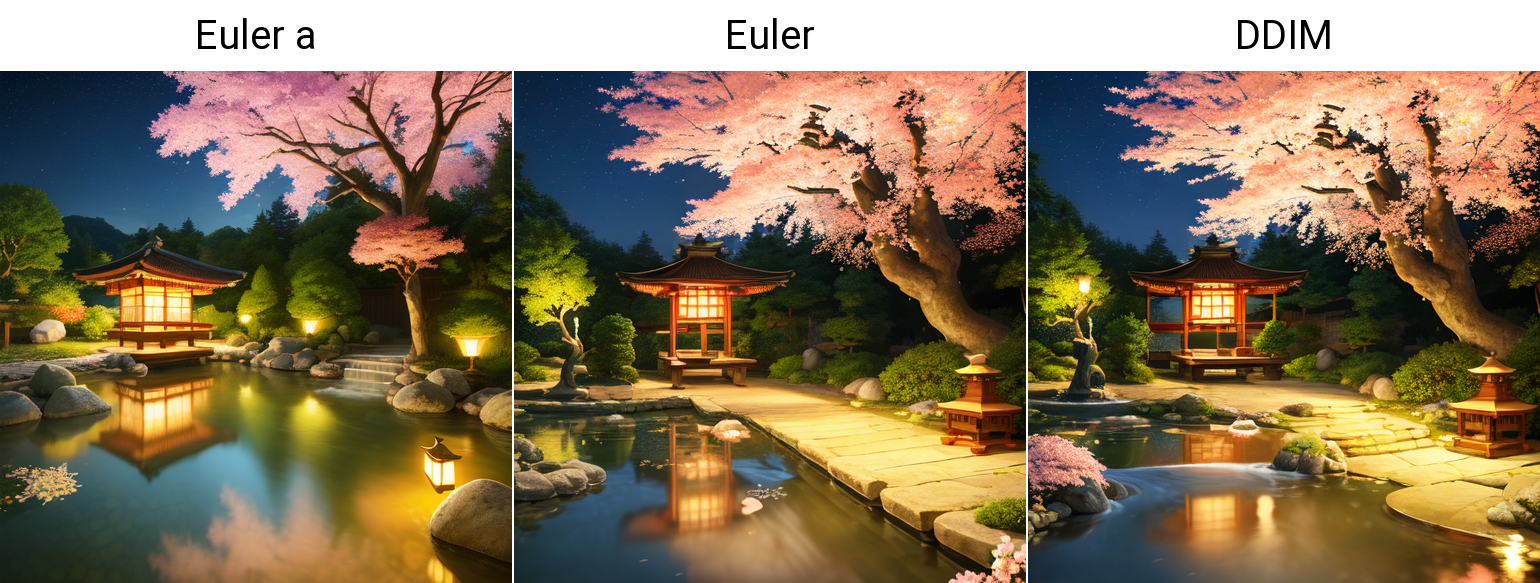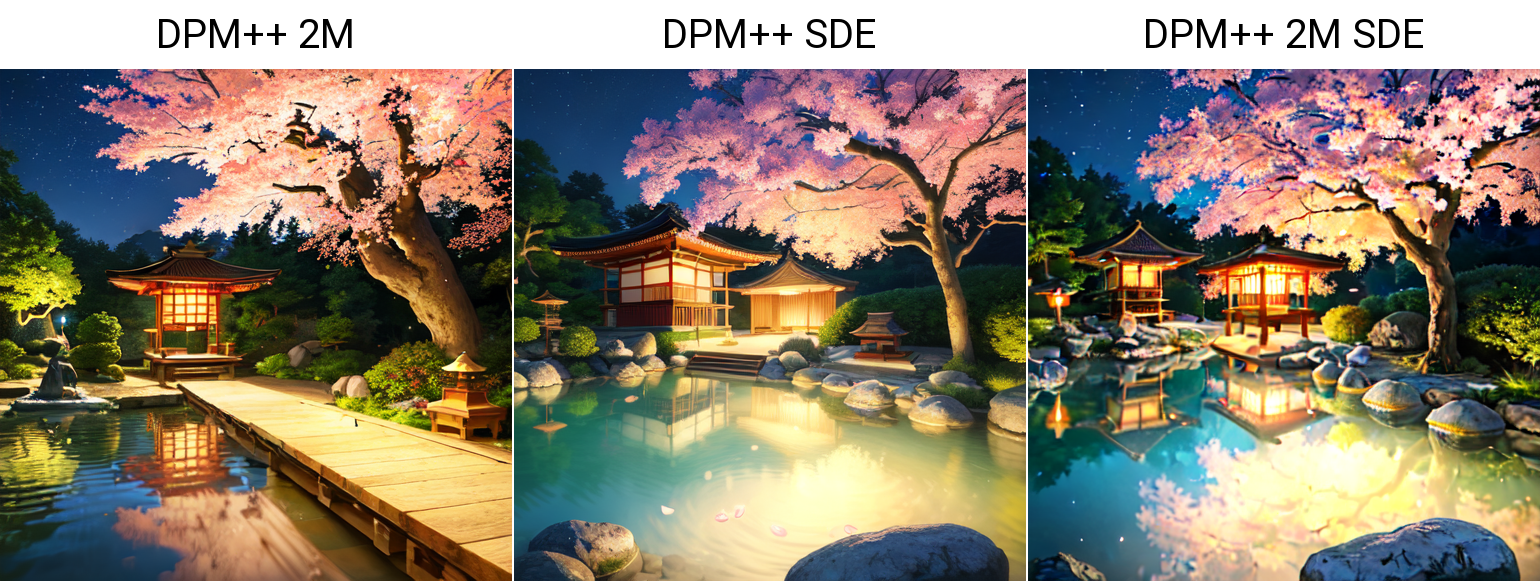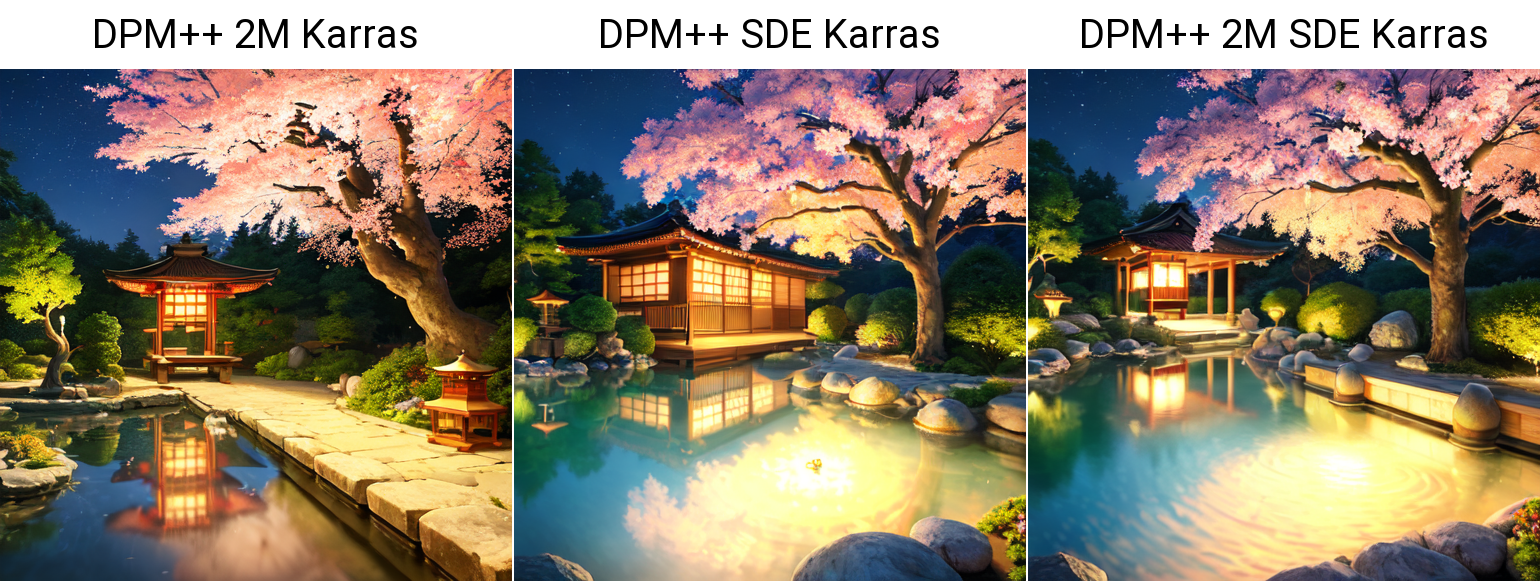This is a quick becnhmark of different Stable Diffusion sampling methods using an Nvidia Geforce GTX 1660 Super video card with a simple prompt and no LoRA.
Hardware involved for this test
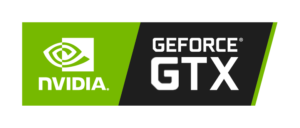
- Gainward GHOST Geforce GTX 1660 Super (6GB VRAM) (view settings)
- Nvidia driver version 531.68
- Kingston Fury 16GB DDR4-3200 RAM
- Core i3 9100F CPU
| Prompt | 3d, 8k, masterpiece, (best quality), Japanese garden, waterfall, cherry blossoms in full bloom, conifer, koi pond, (pagoda:1.1), stone lantern, water basin, water reflections, winding path, (night sky:1.1), hokusai inspiration, ultra-realistic, pastel color scheme, soft lighting, golden hour, tranquil atmosphere, landscape orientation |
| Negative prompt | EasyNegative, (worst quality:1.2), (low quality:1.2), (lowres:1.1), (monochrome:1.1), (greyscale), multiple views, comic, sketch, watermark |
| Seed | 1192013237 |
| Steps | 25 |
| CFG scale | 8 |
| Resolution | 512×512 |
| Upscaling | N/A |
| Software | AUTOMATIC1111 webui |
Benchmark results
- DPM++ 2M SDE: 1.70 it/s
- DPM++ 2M SDE Karras: 1.70 it/s
- DPM++ 2M: 1.72 it/s
- DPM++ 2M Karras: 1.72 it/s ◀ best speed/quality ratio in this case
- Euler a: 1.73 it/s
- Euler: 1.73 it/s
- DDIM: 1.84 it/s ◀ but achieves good results in less steps
- DPM++ SDE Karras: 1.17 s/it
- DPM++ SDE: 1.18 s/it
As you can see, this card cannot generate 512×512 images faster than a quarter of iteration per second. Lowering the resolution (not recommended) does produce much faster results.
Stable Diffusion sampling methods comparison
- 2M Karras: Clear winner here, result are less prone to glitches and imperfections.
- 2M SDE: Fast, however both methods produce malformed/distorted images in this case.
- SDE Karras: Good quality, but twice slower than 2M Karras.
- DDIM: Further testing conclude that DDIM is faster in the sense that good results can be achieved in less steps than other methods.
Euler, Euler a and DDIM steps comparison
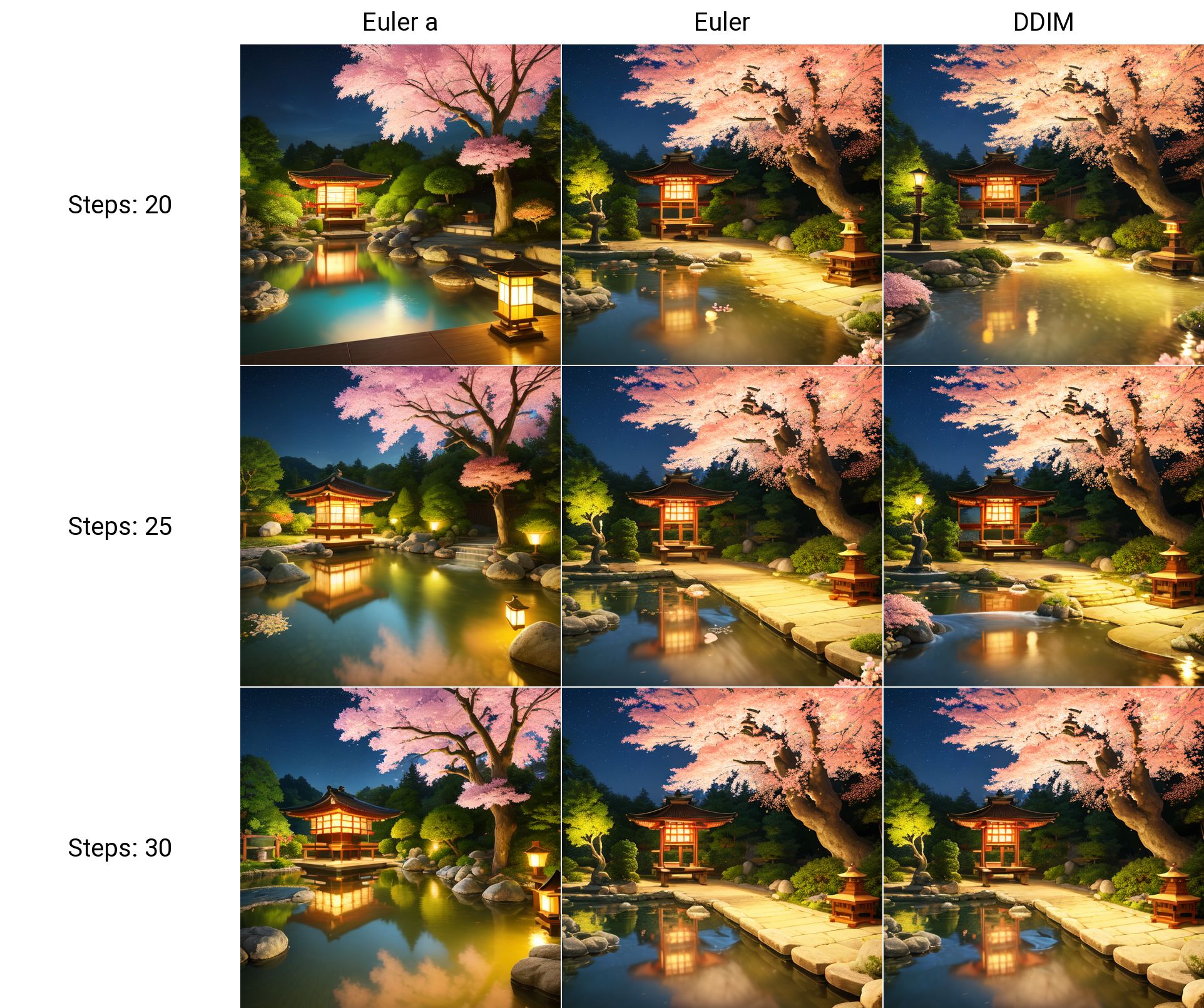
Both Euler a and DDIM achieved good results in 20 steps. Euler took 30 steps to create a glitch-free image.
As shown here, increasing steps can potentially begin to distort a previously fine image. DDIM, which is generally known for achieving good results in less steps, made an image with less glitches than Euler a in just 20 steps. Notice how DDIM got a proper lamp post to the left in 20 steps. More steps mean longer generation time.
Conclusion
There is no absolute winner when it comes to sampling methods. DDIM is known to be cheaper in the sense of achieving goods results in less steps, however, I prefer to use DPM++ 2M Karras alone which is slightly slower, but generates more consistent results.
Some methods are known to produce better results for specific checkpoint models, so when testing a new checkpoint, always test it with the sampling methods that you are most comfortable with. If results are identical in quality, then you should pick the fastest among them.
Disclaimer
The content in this post is for general information purposes only. The information is provided by the author and/or external sources and while we endeavour to keep the information up to date and correct, we make no representations or warranties of any kind, express or implied, about the completeness, accuracy, reliability, suitability or availability with respect to the website or the information, products, services, or related graphics contained on the post for any purpose. Some of the content and images used in this post may be copyrighted by their respective owners. The use of such materials is intended to be for educational and informational purposes only, and is not intended to infringe on the copyrights of any individuals or entities. If you believe that any content or images used here violate your copyright, please contact us and we will take appropriate measures to remove or attribute the material in question.

